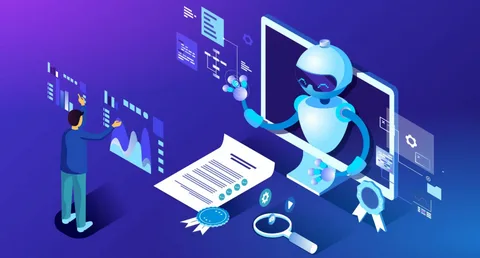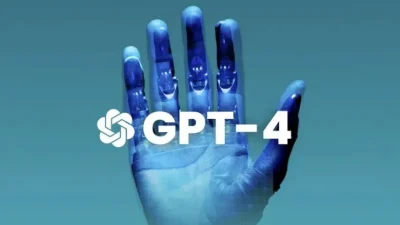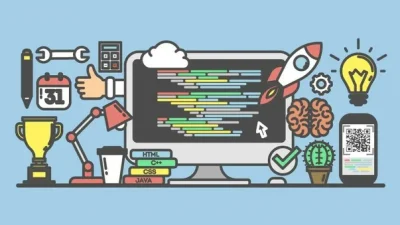GPT-4, the latest iteration of OpenAI’s advanced language model, has significantly expanded its usability and adaptability across multiple platforms. Its robust capabilities in natural language processing, context understanding, and conversational engagement make it a versatile tool in diverse applications. This article explores the platforms that support GPT-4, including web interfaces, mobile applications, and corporate systems, while providing insights into its implementation and practical benefits.

Web Interfaces: The Primary Gateway to GPT-4
The most common way to access GPT-4 is through web interfaces. These platforms offer a user-friendly experience and require minimal setup, making them accessible to individuals and organizations alike.
OpenAI’s Official Platform
OpenAI provides a direct interface for GPT-4 via its web platform, which is designed for ease of use. Users can interact with the model in real time, asking questions, drafting content, or generating ideas. Features such as adjustable temperature settings and token limits allow users to customize their experience.
Key Features:
- User-friendly interface: A clean and straightforward layout.
- Real-time interaction: Instant responses for a wide range of queries.
- Customization options: Tailoring output with adjustable parameters.
Third-Party Web Services
Several third-party services integrate GPT-4 into their platforms, often adding unique functionalities. These services cater to specific industries, such as content creation, customer support, and data analysis. Popular platforms include Jasper, Writesonic, and Copy.ai.
| Platform | Use Case | Unique Feature |
|---|---|---|
| Jasper | Content creation | Tone customization |
| Writesonic | Marketing copy | SEO optimization |
| Copy.ai | Social media management | Prebuilt templates for quick drafts |
Web-based platforms provide an ideal entry point for casual users and small businesses seeking to leverage GPT-4 without extensive technical know-how.
Mobile Applications: GPT-4 on the Go
The mobile integration of GPT-4 has opened up new possibilities for users requiring accessibility and convenience. With its availability on smartphones and tablets, GPT-4 is now a portable solution for real-time assistance.
Standalone Apps
Applications such as ChatGPT Mobile bring GPT-4 directly to mobile devices. These apps are designed with intuitive interfaces and seamless syncing with web versions. Key features include:
- Cross-platform synchronization. Ensures continuity of conversations across devices.
- Voice input. Allows for hands-free interaction.
- Offline mode. Limited functionality without internet access.
Integration with Messaging Apps
GPT-4’s integration into popular messaging platforms like WhatsApp, Slack, and Microsoft Teams enhances collaboration. These integrations enable:
- Automated responses. Quick answers to queries.
- Drafting support. Assistance in creating messages and emails.
- Context-aware suggestions. Recommendations based on conversation history.
Mobile apps cater to users who need flexible access to GPT-4, especially professionals who frequently work remotely or travel.
Corporate Systems: Enhancing Business Operations
For enterprises, GPT-4 provides transformative potential in streamlining operations, enhancing customer experiences, and driving innovation. Businesses are leveraging GPT-4 through APIs and customized integrations.
Customer Support Systems
Companies integrate GPT-4 into their customer service workflows to provide:
- 24/7 support. Consistent availability for customer queries.
- Multilingual support. Communicating in multiple languages to serve global customers.
- Scalable solutions. Handling large volumes of interactions simultaneously.
Knowledge Management and Training
GPT-4 aids in creating, maintaining, and disseminating organizational knowledge. Use cases include:
- Document summarization. Extracting key points from lengthy documents.
- Training modules. Generating educational content tailored to employee needs.
- Search optimization. Providing precise answers to internal queries.
Workflow Automation
With its ability to understand complex instructions, GPT-4 is used to automate repetitive tasks such as data entry, report generation, and scheduling. Integrations with tools like Zapier and custom APIs amplify these capabilities.
| Application Area | Benefits | Example |
| Customer Support | Reduced response times | Chatbots for e-commerce platforms |
| Training and Development | Improved knowledge retention | Interactive training simulations |
| Workflow Automation | Enhanced productivity | Automated report generation |
Corporate systems are ideally suited for larger organizations aiming to enhance efficiency and reduce operational costs.
Practical Implementation Tips
When integrating GPT-4 into any platform, it is important to consider the following:
- Define Objectives. Clearly outline the goals you want to achieve with GPT-4, whether it’s improving customer support or creating content.
- Ensure Data Privacy. Adhere to data protection regulations to maintain user trust.
- Optimize Configurations. Use adjustable settings like temperature and token limits to tailor GPT-4’s outputs.
- Train Staff. Provide training for employees to effectively use GPT-4-powered tools.
- Monitor Performance. Regularly assess the system’s impact on your operations and make necessary adjustments.
Limitations and Considerations
Despite its strengths, GPT-4 has limitations that users should be aware of:
- Accuracy. While highly advanced, GPT-4 may occasionally generate incorrect or nonsensical information.
- Context Sensitivity. Prolonged conversations may lead to context loss, requiring additional clarification.
- Dependence on Quality Inputs. The quality of GPT-4’s outputs heavily depends on the clarity of user prompts.
By addressing these challenges, users can maximize the benefits of GPT-4 while mitigating potential drawbacks.
Conclusion
GPT-4’s compatibility with diverse platforms makes it an invaluable tool for personal, professional, and corporate use. From web interfaces and mobile applications to enterprise systems, its versatility allows for seamless integration into daily workflows. While challenges like accuracy and context sensitivity remain, the potential benefits far outweigh these limitations.
By understanding its capabilities and tailoring its implementation to specific needs, users can unlock GPT-4’s full potential, driving innovation and efficiency across various domains.





